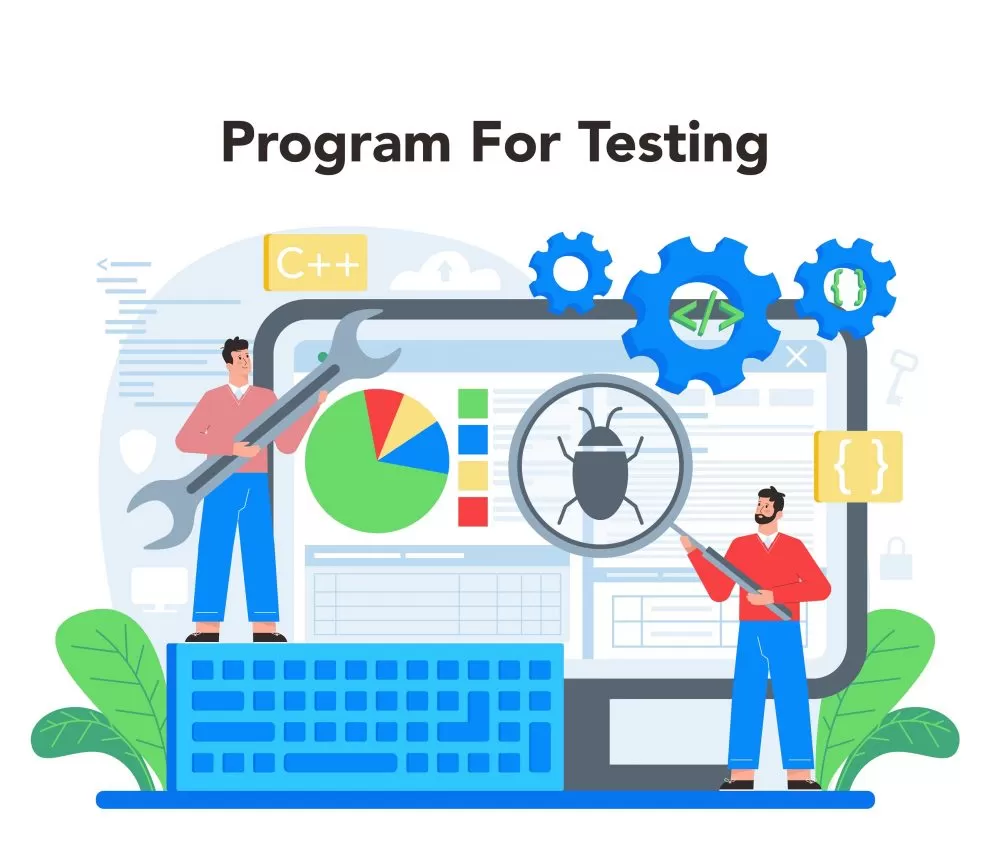In the ever-evolving landscape of web and software development, ensuring the robustness and reliability of a web application is crucial. One of the key aspects of achieving this is through efficient backend testing strategies. A well-planned and executed backend testing approach helps identify and rectify any flaws in the server-side operations, ensuring a seamless experience for users. In this guide, we’ll delve into the realm of backend testing, exploring effective strategies to ensure your application’s backend is solid and dependable.
Understanding the Importance of Backend Testing
Before we delve into the strategies, let’s emphasize why backend testing is pivotal. The backend, often referred to as the server-side, is the engine that powers an application. It manages databases, processes requests, and ensures data integrity. Any malfunctions or vulnerabilities in the backend can lead to application crashes, security breaches, or data corruption.
Efficient Backend Testing Strategies: A Brief Overview
Unit Testing: Ensuring Isolated Component Functionality-
Unit testing involves scrutinizing individual components of the backend in isolation. This strategy helps identify bugs early in the development process, allowing for timely fixes and enhancing the reliability of the code.
Integration Testing:
Validating Component Interactions- Integration testing focuses on examining the interaction between different components of the backend. This ensures that integrated components work seamlessly and fulfill the intended functionality.
Database Testing:
Verifying Data Handling and Storage- Database testing assesses how the backend handles data transactions and storage. It ensures that data is accurately stored, retrieved, and manipulated in the database.
API Testing: Validating Communication Channels-
API testing is vital for verifying the communication between the application and the server. It ensures that the API endpoints function as expected, delivering the desired responses for various requests.
Performance Testing: Evaluating Speed and Responsiveness-
Performance testing evaluates the speed, responsiveness, and stability of the backend under varying conditions. This is crucial to ensure the backend can handle the expected load without degradation in performance.
Security Testing: Safeguarding Against Vulnerabilities-
Security testing is critical to identify and mitigate potential security vulnerabilities in the backend. It helps in ensuring that sensitive data remains protected and the application is resilient against security threats.
Also Read: How to Build a Website With Node JS
Implementing an Effective Backend Testing Strategy
An effective backend testing strategy is a well-rounded approach that integrates multiple testing methodologies to ensure a robust and reliable backend. Here’s a step-by-step guide to implementing an efficient backend testing strategy:
Understand the Application Architecture and Design:
Familiarize yourself with the application’s architecture, the technologies used, and the design of the backend components. This understanding will guide you in choosing the appropriate testing methodologies.Identify Key Functionalities for Testing:
Identify the critical functionalities and components of the backend that need to be thoroughly tested. This could include authentication mechanisms, data processing algorithms, database interactions, and more.Prioritize Testing Areas:
Prioritize the identified functionalities based on their importance and potential impact on the application. Allocate more testing resources to critical areas that are fundamental to the application’s functionality.Select Appropriate Testing Tools:
Choose the right set of testing tools that align with the identified testing methodologies. Different testing types require specific tools for efficient testing and analysis.Develop Comprehensive Test Cases:
Create detailed test cases for each identified functionality. These test cases should cover various scenarios, edge cases, and possible inputs to ensure thorough testing.Automate Testing Processes:
Whenever possible, automate the testing processes using suitable testing frameworks. Automation increases efficiency, speeds up the testing cycle, and allows for quicker identification of issues.Regularly Monitor and Update Tests:
Keep the test suite up to date with any changes in the application’s codebase. Regularly monitor the tests, modify them as needed, and add new tests for new features or functionalities.
By following these steps and integrating the mentioned testing methodologies, you’ll establish a robust backend testing strategy that enhances the overall reliability and performance of your application.
Automated Testing: A Cornerstone of Efficiency
Automated testing is a fundamental aspect of efficient backend testing strategies. It involves utilizing software tools to execute predefined test cases, comparing actual results against expected results, and generating detailed reports. Automated testing significantly speeds up the testing process, allowing for faster feedback on code changes and reducing the risk of human error.
Efficient Backend Testing Strategies: Automating for Success
Continuous Integration (CI) and Continuous Deployment (CD):
Integrate automated tests into your CI/CD pipeline to ensure that every code change triggers a series of automated tests. This facilitates early detection of defects and provides a quick feedback loop to the development team.Use of Testing Frameworks:
Employ robust testing frameworks, such as JUnit, Pytest, or NUnit, that are specifically designed for backend testing. These frameworks provide a structured approach to writing and executing test cases, making the testing process more organized and efficient.Regression Testing:
Implement automated regression testing to ensure that new updates or enhancements do not adversely affect existing functionalities. This type of testing verifies that recent changes haven’t introduced unexpected bugs or broken existing features.Load and Stress Testing:
Automate load and stress testing to simulate various levels of user traffic and analyze how the backend handles different load scenarios. These tests help identify performance bottlenecks and optimize the backend for optimal user experience.
Also Read: Laravel Vs Ruby on Rails: Checkout the Differences
Effective Data Management and Mocking
Data management and mocking are crucial components of backend testing, especially when dealing with databases and external services. Efficiently handling test data and creating mock services are essential for maintaining test independence and repeatability.
Efficient Backend Testing Strategies: Data Management and Mocking
Database Seeding and Rollbacks:
Implement automated database seeding to ensure consistent and known data states for tests. After each test, roll back any database changes to maintain the integrity of subsequent tests.Mocking External Services:
Utilize mocking frameworks to create simulated versions of external services. By doing so, you can control the behavior of these services during testing, ensuring a controlled and predictable testing environment.
Collaborative Testing and Cross-Functional Teams
Encourage collaboration between developers, testers, and other stakeholders throughout the development process. Cross-functional teams foster a collective understanding of testing requirements, ensuring that testing is an integral part of the development lifecycle.
Efficient Backend Testing Strategies: Collaboration for Success
Regular Code Reviews:
Conduct regular code reviews involving developers and testers to share insights, identify potential issues, and ensure that the code meets both functional and non-functional requirements.Pair Programming:
Encourage pair programming sessions where a developer and a tester work together to write code and create corresponding tests. This collaborative effort enhances the quality of the code and the tests.
Monitoring and Error Logging
Implement comprehensive monitoring and error logging mechanisms in the backend to capture and analyze data during testing and production. Monitoring helps identify performance issues, while error logging provides valuable insights into potential defects.
Efficient Backend Testing Strategies: Monitoring and Error Logging
Utilize Monitoring Tools:
Integrate monitoring tools like Prometheus, Grafana, or ELK Stack to track the performance and behavior of the backend during testing. Monitor key metrics such as response times, error rates, and resource utilization.Centralized Error Logging:
Implement centralized error logging, where backend errors and exceptions are logged in a centralized system. This allows for easier debugging, identifying patterns of errors, and addressing potential issues promptly.
Robust Error Handling and Boundary Value Analysis
Efficient error handling and boundary value analysis are indispensable components of backend testing. They involve validating the application’s behavior at the edges and extremes, ensuring it responds appropriately to various inputs.
Efficient Backend Testing Strategies: Error Handling and Boundary Value Analysis
Error Messages and Codes:
Thoroughly validate error messages and codes generated by the backend in response to different inputs. Ensure they are meaningful, user-friendly, and provide sufficient information to aid debugging and troubleshooting.Boundary Value Analysis:
Focus on testing at the boundaries of input parameters. Test with values at the lower and upper bounds of acceptable ranges as well as just beyond those boundaries. This helps identify potential vulnerabilities or unexpected behavior.
Security Testing: Safeguarding Your Backend
Security testing is a paramount aspect of efficient backend testing strategies. Safeguarding sensitive data and protecting against security threats is non-negotiable in today’s digital landscape.
Efficient Backend Testing Strategies: Ensuring Security
Authentication and Authorization Testing:
Rigorously test different authentication mechanisms, ensuring secure login processes and authorization mechanisms are in place. Verify that unauthorized users cannot access restricted functionalities.Input Validation:
Test the backend’s ability to handle unexpected or malicious inputs effectively. Validate that input validation mechanisms are in place to prevent SQL injection, cross-site scripting (XSS), and other security vulnerabilities.
Scalability and Performance Testing
Efficient backend testing encompasses evaluating the application’s scalability and performance. It’s vital to ensure the backend can handle an increasing load gracefully without compromising performance.
Efficient Backend Testing Strategies: Scalability and Performance
Scalability Testing:
Conduct scalability tests to determine how the backend performs under various load levels. Assess the application’s ability to scale up or down based on the user load, ensuring it remains responsive and reliable.Performance Optimization:
Optimize the backend for maximum performance by analyzing bottlenecks and addressing issues that might hinder responsiveness. Utilize caching, indexing, and efficient algorithms to enhance overall performance.
Conclusion
Efficient backend testing is the linchpin of a reliable and high-performing web application. By adopting a strategic approach that encompasses automation, data management, collaboration, and monitoring, you ensure a robust backend that can withstand real-world challenges.
Remember, the investment in a strong backend testing strategy pays off in terms of improved user satisfaction, reduced maintenance costs, and a solid reputation for your application in the competitive digital landscape. So, make the right investment and craft an efficient backend testing strategy for your application’s success.















